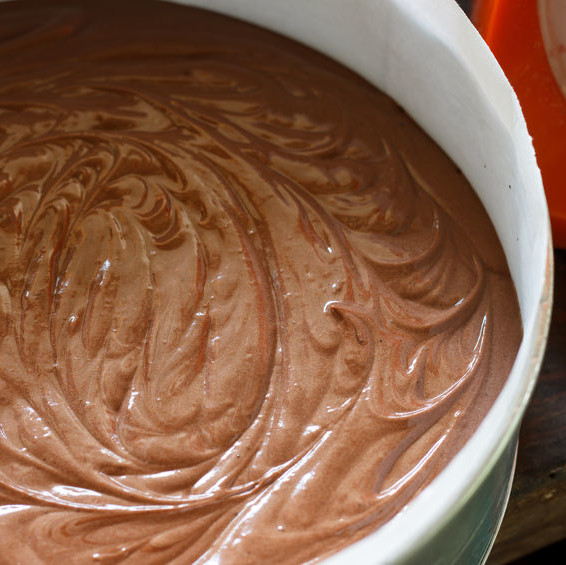
Viscometer
Also known as a viscosimeter
What is a Viscometer?
A viscometer is an instrument that measures the viscosity of liquid, semi-solid and even solid food products. Viscometers are important components of quality assurance laboratories as they are used to obtain information about the flow behavior (rheology) of materials due to changes in processing conditions, formulation, aging (staling), etc.
Viscosity measures the internal friction of a fluid, an indicator of its resistance to flow. It is expressed in centiPoise (cP) or Pascal-sec (Pa-s). Water has a viscosity of 1 cP.
Origin
The first viscometers date back more than a hundred years ago. Possibly, the first instrument for testing the rheological and textural properties of foods was developed by the French researcher Schwedoff in 1889. The instrument was, essentially, a deformation apparatus for studying jellies based on a torsion test which can objectively measure rigidity, viscosity, and relaxation characteristics.1
How does it work?
Viscometers work under several physical principles. Different types of viscometers operate according to their design, the nature of sample (Newtonian and non-Newtonian behavior) and testing conditions. Types of viscometer include rotary viscometer, falling sphere method, u-tube capillary viscometer, Rapid Visco Analyzer (RVA) and viscoamylograph.
Rotary viscometer
It measures the torque (energy or work) required to rotate an immersed cylindrical or disc spindle in a fluid product. Rotary viscometers measure the viscosity of liquids by measuring the resistance of the material to the stirring action of the spindle which is driven by a motor to obtain a certain number of revolutions per unit time.
A rotary viscometer usually uses multiple speed transmission that generates different shear rates, and interchangeable spindles to measure a variety of viscosity ranges, making it a very versatile instrument. This instrument measures viscosity at room temperature.2
Falling sphere method
This empirical method involves a vertical tube where a sphere of known size and density is allowed to fall under a given force (e.g. gravity) through a Newtonian fluid. The falling time of the sphere over a certain distance or the falling velocity is determined by two forces, the sphere gravity and the drag force (viscosity) of the fluid, and is used to calculate the fluid viscosity according to Stokes’ law.2
U-tube capillary viscometer
The u-tube capillary viscometer is a simple method to qualitatively estimate viscosity. This method measures the resistance of liquid to flow through a ‘U’-shaped capillary channel. The flow time of a liquid through a certain length of the channel is recorded as the efflux time and is used to calculate apparent viscosity.2
Rapid Visco Analyzer (RVA) and viscoamylograph
These instruments asses the technological properties of suspensions of starch, gums and/or flour, e.g. water absorption and retention (swelling), thickening (pasting) or gelling capacity, at different temperatures (hot/cold functionality or setting), to understand their behavior at different heat processing conditions. They also assess the enzymatic activity of flours caused by sprout damage (alpha amylase activity – shear thinning effect).4,5
Application
Viscometers help food scientists in:
- Evaluating the technological properties of gums/starch suspensions at different particle sizes, pH, concentration of ionic compounds such as salts, and sugars (°Brix).
- Testing gluten development due to protein aggregation in flour-water batters (viscosity increase within shearing time).
- Studying the shear-thinning behavior of concentrated juices, vegetable products and creams.
- Measuring the viscosity of batters (non-Newtonian materials) to assess the stability of the dispersed phases within the system to different mixing regimes, mixing temperatures, concentration of hydrocolloids, floor times and baking temperatures.
- Predicting the pumpability, heat transfer and heat penetration properties for thermal processing of liquid foods.
Viscometers are very valuable in the manufacture of chemically leavened bakery products such as cakes. In the case of batters, when viscosity is too low, dispersed (heavier) solids such as starch, proteins and fruit inclusions tend to sink to the bottom of the pan, forming a tough, rubbery layer due to gelatinized starch and denatured proteins.
Viscometers that operate at a single shear rate (e.g. falling sphere method and U-tube capillary viscometers) are suitable for foods that exhibit Newtonian behavior. However, for foods that exhibit non-Newtonian behavior, data should be obtained at several shear rates. In these cases rotational viscometers are the best option.
Viscosity values for non-newtonian fluids are usually provided with specific testing conditions such as % concentration of solids in sample or solution, shear rate and temperature.2
References
- Bourne, M.C. “Texture, Viscosity, and Food” Food Texture and Viscosity: Concept and Measurement, Academic Press, Elsevier, 2002, pp. 26–27.
- Foegeding, E.A. “Dairy Systems” Practical Food Rheology: An Interpretive Approach, Blackwell Publishing Ltd., 2011, pp. 139–141.
- Finnie, S., and Atwell, W.A. “Wheat and Flour Testing.” Wheat Flour, 2nd edition, AACC International, Inc., 2016, pp. 72–77.
- Papageorgiou, M., and Skendi, A. “Flour Quality and Technological Abilities” Engineering Aspects of Cereal and Cereal-Based Products, CRC Press, Taylor & Francis Group, LLC, 2014, p. 128.
- Wheat Marketing Center. “Wheat and Flour Tests” Wheat and Flour Testing Methods: A Guide to Understanding Wheat and Flour Quality, Wheat Marketing Center Inc. (WMC), 2004, pp. 45–49.

